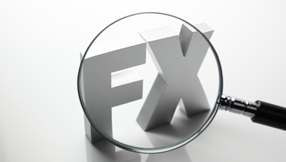Article Summary: A simple and common Forex strategy is to buy low and sell high. Today, we look at how to analyze a chart to determine the timing of buying a dip or selling a rally.
Humans love to buy stuff on sale whether it is a bicycle, milk, a home, or insurance. Financial markets are no different. When something you considered purchasing yesterday is now available at a cheaper price, many people typically become excited about the opportunity at hand.
Today, we will cover a three step process to determine the timing of when to buy the dip or sell the rally in forex.
- Determine trend direction
- Pick your favorite oscillator
- Filter your signals in the direction of the trend
1) Determine Trend Direction
Trend trading is one of the most widely followed Forex strategies used by new and experienced traders. This is for many reasons including Forex trends tend to last a while and you have more pips available in the direction of the trend than against the trend.
Stand back for your chart and identify which direction the prices are generally moving. Make this step so easy that a 10 year old child can do it consistently.
There are other techniques involving forex technical analysis such as determining a series of higher highs and higher low or using simple moving averages. All are valid methods of trend identification.
When you understand the benefits of trend trading, you will realize that Forex trading can be made easier with some simple strategies.
2) Pick Your Favorite Indicator
There are many tools to help traders identify potential reversal points in a market. Four highly effective trading indicators that every trader should be familiar with includes the Simple Moving Average, RSI (Relative Strength Index), Stochastic, and MACD (Moving Average Convergence Divergence).
Once you have identified a strong trending market, apply the RSI, Stochastic, MACD indicator to your chart.
No need to apply all of these indicators. You only need one of them. Pick the indicator based on your personal preference and the one you are most comfortable with reading its signals.
3) Filter Your Signals in the Direction of the Trend
Since most pips are available in the direction of the trend, it would make sense to trade only those signals that generate in the direction of our trend. One of the useful tools to identifying overbought and oversold levels is the Relative Strength Index (RSI).
For example, if the trend is strong to the upside, then we want to take only oversold signals from RSI and ignore overbought signals. Buying oversold signals aligns us with the direction of an uptrend.
Forex Strategy: Buying Dips and Selling Rallies

(Chart Created by Jeremy Wagner, CEWA-M)
Also, the oversold signal in an uptrend should act like a beach ball being held underwater. Meaning, once the oversold pressure is relieved, prices should pop up quickly. That is the position we want to be in to trade this ‘pop’ higher if the trend is up.
The opposite would be true in a downtrend where we look only for overbought levels and ignore oversold levels.
Conclusion
Filtering your trades in the direction of the trend is a critical element to improving the probability of consistent results. Remember, only buy in an uptrend and sell only in a downtrend.
Following this easy three step process will allows you to identify trading opportunities. The next part of the equation is to then determine your trade size. For more on that, follow this 3 step guide to determine your trade size.
Best of luck!
---Written by Jeremy Wagner, CEWA-M, Head Trading Instructor, DailyFX Education
Follow me on Twitter at @JWagnerFXTrader.
Interested in our analyst's quarterly forecasts on major markets?
Are you new to forex trading? We designed this new to forex guide with you in mind.




